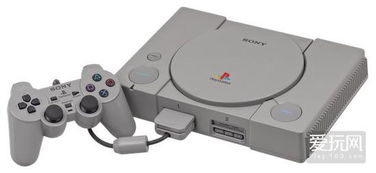History of Game Consoles

The history of game consoles dates back to the late 1970s when arcade cabinets began to gain popularity. The first home console, the Magnavox Odyssey, was released in 1972, but it was not until the 1977 release of the Atari 2600 that home gaming became a widespread phenomenon. Since then, several companies have entered the market, including Nintendo, Sega, Sony, and Microsoft, each contributing to the growth and evolution of the industry.
Types of Game Consoles

There are several types of game consoles available today, each with its unique features and appeal. The following are some of the most popular types:
Home Consoles: These are the most common type of game console, designed for use in the home. Examples include the PlayStation, Xbox, and Nintendo Switch.
Handheld Consoles: These portable devices allow players to enjoy games on the go. Notable handheld consoles include the Game Boy, PlayStation Vita, and Nintendo 3DS.
Arcade Consoles: These are large, coin-operated machines found in arcades and amusement parks. They are known for their high-quality graphics and immersive experiences.
Impact of Game Consoles on Society

Game consoles have had a significant impact on society, influencing various aspects of daily life. Some of the key impacts include:
Social Interaction: Online multiplayer games have brought people from all over the world together, fostering friendships and communities.
Entertainment: Game consoles provide a unique form of entertainment that can be enjoyed alone or with friends and family.
Education: Educational games have been developed to help children learn and develop various skills, such as problem-solving and strategic thinking.
Economic Impact: The gaming industry generates billions of dollars in revenue each year, creating jobs and contributing to the global economy.
Evolution of Game Console Technology

Over the years, game console technology has evolved significantly, with each new generation offering improved graphics, processing power, and features. Some notable advancements include:
Graphics: Early consoles had limited graphical capabilities, but modern consoles can produce stunning visuals that rival those of high-end PCs and movies.
Processing Power: The processing power of game consoles has increased exponentially, allowing for more complex game mechanics and realistic simulations.
Online Connectivity: Modern game consoles offer seamless online connectivity, allowing players to compete with friends, join online communities, and access a vast library of digital games.
Conclusion

Game consoles have become an integral part of modern society, providing entertainment, education, and social interaction for millions of people worldwide. As technology continues to advance, we can expect even more innovative and immersive gaming experiences in the future. Whether you're a casual gamer or a hardcore enthusiast, game consoles have something to offer everyone.
Tags:

game console, history, types, impact, evolution, graphics, processing power, online connectivity, social interaction, entertainment, education

















网友评论